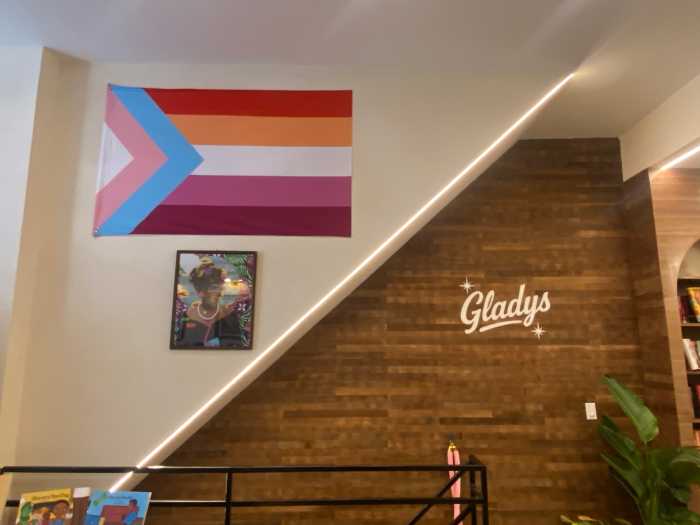Socialite Babe Paley in a Charles James ball gown, 1950. | JOHN RAWLINGS/ VOGUE/ CONDÉ NAST ARCHIVE/ METROPOLITAN MUSEUM OF ART
BY DAVID NOH | Among the mob at the Metropolitan Museum of Art’s press preview for “Charles James: Beyond Fashion,” I spotted Stephen Jones, undoubtedly the greatest living milliner, so it was a no-brainer to seek out his view of James, whom many deem America’s greatest fashion designer ever.
“He was undoubtedly the greatest,” Jones said, “and the person who got me into fashion. In 1975 there was an exhibition in London called ‘Fashion: 1900-39,’ and his quilted satin jacket was there. When I saw it, I thought, ‘Wow, I’d love to be a fashion designer,’ and that was it. Coming here today is certainly like I’ve died and gone to Heaven!
“Yes, he was an artist, but, for me, it was the incredible forms that he created, that incredible shape and, in fact, if he were not a milliner originally, he would not have become the dress designer he became because I can see all millinery techniques in the clothes. Other people like Vionnet worked on the dresses with the same hands-on approach, but his are specifically millinery techniques.”
The Met inaugurates its Anna Wintour wing with a celebration of Charles James
That 1937 jacket, whose white satin padded contours are at once sublimely chic and presciently evocative of the ubiquitous butch nylon bomber jackets so beloved by gay men in the 1970s and ‘80s, occupies pride of place in the newly dubbed Anna Wintour Costume Center at the Met.
The jacket wrung high praise from Fashion Institute of Technology’s Valerie Steele. She told me, “James was amazing, a genius, and almost certainly the greatest designer in American history. A very troubled personality but a true genius, and this show looks absolutely amazing! I never met him but other people at FIT used to see him come around from the Chelsea Hotel. This jacket is the single most forward piece he ever did, but, of course, in all of his clothes, the way he manipulated fabric and created abstract biomorphic shapes is totally instrumental. Also, his color sensibility was really fabulous, the combinations of colors. I remember his last show at the Brooklyn Museum had a ball gown which was dark tobacco brown and navy blue combined. Extraordinary!”
James (1906-78) was born in England to a British father and an American mother from Chicago. He attended the prestigious private Harrow School, along with Evelyn Waugh and, significantly, Cecil Beaton, with whom he became lifelong friends and who consistently championed his design eminence. Expelled from Harrow for a gay sexual “escapade,” he threw himself into design, which first focused itself on hatmaking.
Mostly self-taught, in 1926, he opened a hat shop in Chicago, using the name Charles Boucheron. A few years later, he came to New York where he opened a shop and began to design dresses. From there, he moved back to London and based himself in fashionable Mayfair, where his designs really began drawing attention.
He showed his dresses in Paris in 1947, and from the 1950s on spent most of his time in New York, where socialites and celebrities as diverse as Mrs. William Randolph Hearst, Millicent Rogers, Doris Duke, Jennifer Jones, Lily Pons, and Gypsy Rose Lee became his private clients. He married a wealthy Kansas girl, Nancy Lee Gregory, with whom he had a son, Charles, Jr., and a daughter, Louise. He was divorced in 1961 and lived and worked for the rest of his life in the Chelsea Hotel. He died of bronchial pneumonia there at age 72.
This definitive Met show occupies another gallery besides the Anna Wintour wing. There, dramatically lit and standing apart from one another, presented as pure sculptures, are the famous ball gowns upon which James’ reputation is largely based. Opulent, elegant, and architecturally daunting, these surpass mere dresses, being more akin to mobile habitations for their wearers. Intricately draped, padded, and cut, as with all James designs, the line takes precedence over any consideration of hue or trimming. This is never more apparent than in his masterpiece, the “Four Leaf Clover” gown, whose skirt extends itself into a quartet of free-standing ridges, the mind-boggling painstaking construction of which is shown in an accompanying screen that digitally animates its formation.
This high tech visual accompaniment is prevalent throughout the exhibit and, indeed, has become by now an inextricable, state of the art part of the Met’s presentation of fashion design. It’s impressive, to say the least, but the overall effect of the gallery is a bit on the glacial side. Yes, one can see the determined effort to make the case for fashion as high art here, but I rather miss the glamorous élan of the shows during Diana Vreeland’s heyday as Costume Institute directress. That doyenne of clothing might well have seen fit to house these gowns in a more lushly inviting, fin-de-siecle type of setting, reminiscent of the Beaton ads of the 1950s, which utilized them to advertise a feminine hygiene product, no less (“Modess, because…”).
Charles James’ 1932 Taxi dress, in black wool ribbed knit. | METROPOLITAN MUSEUM OF ART/ ALAN W. KORNBERG GIFT
There is no denying the impact of the ball gowns, but I was also struck by how, well, ugly a few of them were. A huge flounced ruffle at the bottom of one of them looked downright tacky, and then there were all those fairly overt suggestions of female genitalia, which James, ever one for the eroticism of clothing, was fond of projecting. For any necessarily well-heeled client of his, the idea of the dress wearing you had to be a serious question to consider, for there were — and are — few women who could flaunt such look-at-me! concoctions with the Boldini flair of a Gypsy Rose Lee, so practiced in the art of physical plastique.
Many of these gowns have been prominently featured in other fashion retrospectives, for James is, of course, an absolute go-to when considering the couture greats. I found the Wintour gallery, with its collection of his innovative daywear, far more interesting. There, one can see the “Taxi” dress, from 1932, a stark wrap dress of black wool knit with three simple enclosures any woman could easily remove or don in a moving cab, which timelessly presages those easy frocks on which Diane von Fursternberg has built her present empire.
That dress could easily be worn today, as is the case with so many others. Along with their sleek, classic lines, most of these garments share the subdued palette James favored — black, brown, deep gray — which modern color-shunning fashionistas have clung to for the last 30 years.
James was perhaps the most notoriously difficult man in the business, his own worst enemy when it came to running a viable business. He was beyond temperamental and inordinately possessive of his work; a client could commission a gown and wait an eternity while he endlessly tweaked it into his idea of final perfection. His later years, marked by a brief collaboration with Halston, which blew up into egotistical acrimony, were bitter and more than a tad raffish, but a light came into them in the form of the great illustrator Antonio Lopez, who gave him something of a renaissance in the 1970s. Lopez intoxicatingly brought models, photographers (including an enslaved-by-talent young Bill Cunningham), eager students, and, most importantly, new life into James’ Chelsea Hotel digs, and electrifying all-night drawing sessions took place, with James center stage as everyone’s acknowledged guru. (Often these ended with excursions to Studio 54, with Lopez’s entourage clad in James’ designs, which would be returned rather the worse from disco wear.)
Longtime New York publicist and writer R. Couri Hay, who has some fabulous original James sketches in the show, reminisced, “Charles made clothes for both my mother and grandmother. When I first came to New York, my auntie arranged a letter of introduction to Diana Vreeland, who never got along with Charles. I was sent to Halston, who became my lover for a couple of years. Halston sent me down to meet Charles and I was junior chairman of the Electric Circus show that Halston did with Charles in 1969.
Charles James’s 1953 Four Leaf Clover dress, with white silk satin, white silk faille, and black silk-rayon velvet. | METROPOLITAN MUSEUM OF ART/ GIFT OF ELIZABETH FAIRALL
“That began a long relationship with Charles — about 10 or 12 years — and during that period we made a 20-hour documentary about him with Anton Perich about his life and philosophy of design. I would buy a drawing every month or two from Charles in order for him to have money to buy fabric and eat and buy food for Sputnik, his dog. When he died, I provided the money to [James’ assistant] Homer Layne, who didn’t have enough to buy the dresses back from the William Doyle Gallery, which was auctioning them. I then bought more drawings but, like an idiot, I didn’t realize that maybe I should have bought those dresses, which certainly became incredibly valuable. But the important thing is that Homer gave them all to the Met, and my collection of over 100 drawings I will also give to the Met. I’m so proud to have a group of them in the show. And yes, Anton still has that documentary and we are going to be showing it back on cable, where it started originally, in June.”
The faithful Layne lovingly held on to his mentor’s memorabilia, which is on exhibit and, from this, we are able to glean ideas about the personal as well as professional side to James through the many sketches, photo layouts, mannequins, and videos on view. The item I found most touching and revealing was a typewritten wish list of clients James made, which includes his reasons, such as Garbo (“need I say?”), Virginia Woolf (“A rarely sensitive beauty who contributed a new style in fine writing”), legendary opera singer Claudia Muzio (“beautiful innovator of singing throughout the world. Has influenced 3 generations of singers”), Gertrude Stein (“Massive elegance; great style”), Lana Turner (“Beautiful and far greater actress than recognized”) and, most tellingly, Mick Jagger (“Sexy bastard; can wear and/or make everything and everybody”).
CHARLES JAMES: BEYOND FASHION | Metropolitan Museum of Art | 1000 Fifth Ave. at 82nd St.| Through Aug. 10 | Sun.-Thu., 10 a.m.- 5:30 p.m.; Fri.-Sat., 10 a.m.-9 p.m. | $25; $17 for seniors; $12 for students | metmuseum.org



































